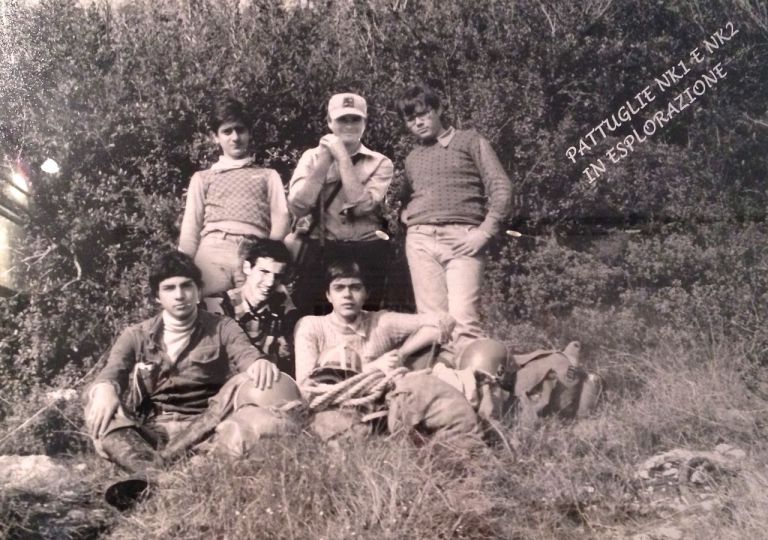
Six boys disappear into a cave…
In 1979 six Italian boys who had formed a speleology group were out practicing their rappelling skills on a rock face on the steep side of the village of Narni. The oldest, Roberto Nini, mistakenly crashes into a cabbage patch on a terrace below. At first the farmer,Ernani Proietti, is angry, but Roberto tells the old farmer about the group’s passion for finding and mapping caves and other underground chambers.

Ernani shows them a hole into the cliff face in the back of the stable where he kept his livestock and tells them to see what was there. Just like the moment in the wardrobe in C.S. Lewis’s fictional Narnia (inspired by Narni) in The Lion, The Witch, and The Wardrobe that moment forever changed the lives of the boys and the town.

Above the farmer’s plot was the abandoned San Dominico monastic complex dating from 1303 (which was built on top of a 6th-century Paleochristian church.) The monks left in 1860, the monastery was falling to ruin, and then it was bombed in WWII. In 1979 the rubble from the bombing still cascaded down the cliff and formed the back of Ernani’s garden and shed. What Ernani didn’t know, and the boys discovered, was that the bombing had uncovered access to several underground chambers which had been walled up several centuries before. And Roberto Nini was to spend the next 40 years of his life investigating the mysteries inside.

The boys enter the pitch black cavern. The first thing that their light illuminates is a pair of eyes looking back at them. They belonged to a fresco of an angel in what had been a church from the 1300s. On all the walls are beautiful frescoes.

The church had been badly damaged by water. The boys started working to clear it out and started a volunteer group that has restored it and gives tours, called Narni Underground, or Narni Sotterranea. Some of the tours are led by Roberto Nini himself. Over time the boys kept discovering more chambers, including an intact Roman cistern next door to the church.
The third and fourth chambers held the most startling thing they discovered—an interrogation chamber from one of the main courts of the Papal Inquisition of the 16th and 17th centuries, and a prisoner’s cell. Centuries before the church had walled the rooms off and denied that there had ever been an active seat of the inquisition in Narni, but Roberto went to work.

He discovered that the Church had ordered most documents about the inquisition to be destroyed in 1809. While in storage in a warehouse waiting for the paper mill one box was stolen and ended up in a monastery in Dublin. When Roberto found out about this he went to Dublin and found the papers that referenced the trials in Narni. This led him to be admitted to the Vatican Library where he found additional documentation. One record told the story of a Giuseppe Andrea Lombardini who was put on trial in 1759. When the prisoner cell was discovered they found on the wall a large inscription “IO GIUSEPPE ANTREA LOBARTINI CAPORALE – FUI CARGERATO”, meaning, “I Giuseppe Andrea Lombardini was incarcerated”. The entire cell is richly decorated with masonic symbols and markers of time spent in the cell.

The visit was great, but what I loved most was the story of the people behind the site. The volunteer giving the tour was exceptionally engaged, enthusiastic, and passionate—it was like the first time she’d shared the stories. It is amazing to me that somehow these boys had managed to rally the community, form a volunteer organization, find funds and talent for restoration, and do the level of research that they had, all over the course of decades. Interesting to see how saying “yes” to going into an unexplored cave changed so many people’s lives.
(Thanks to Underground Narni for the beautiful photos.)






No Comments